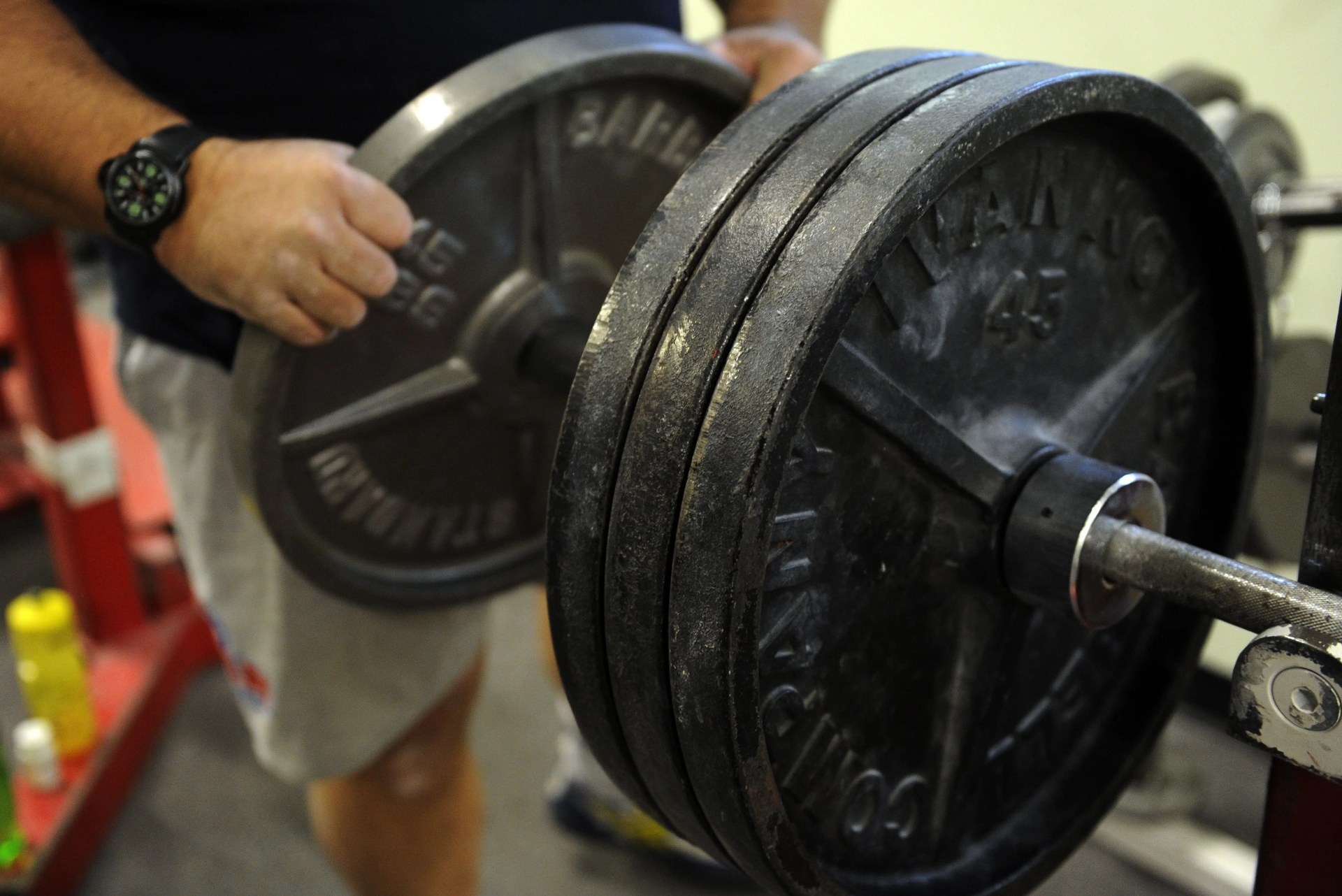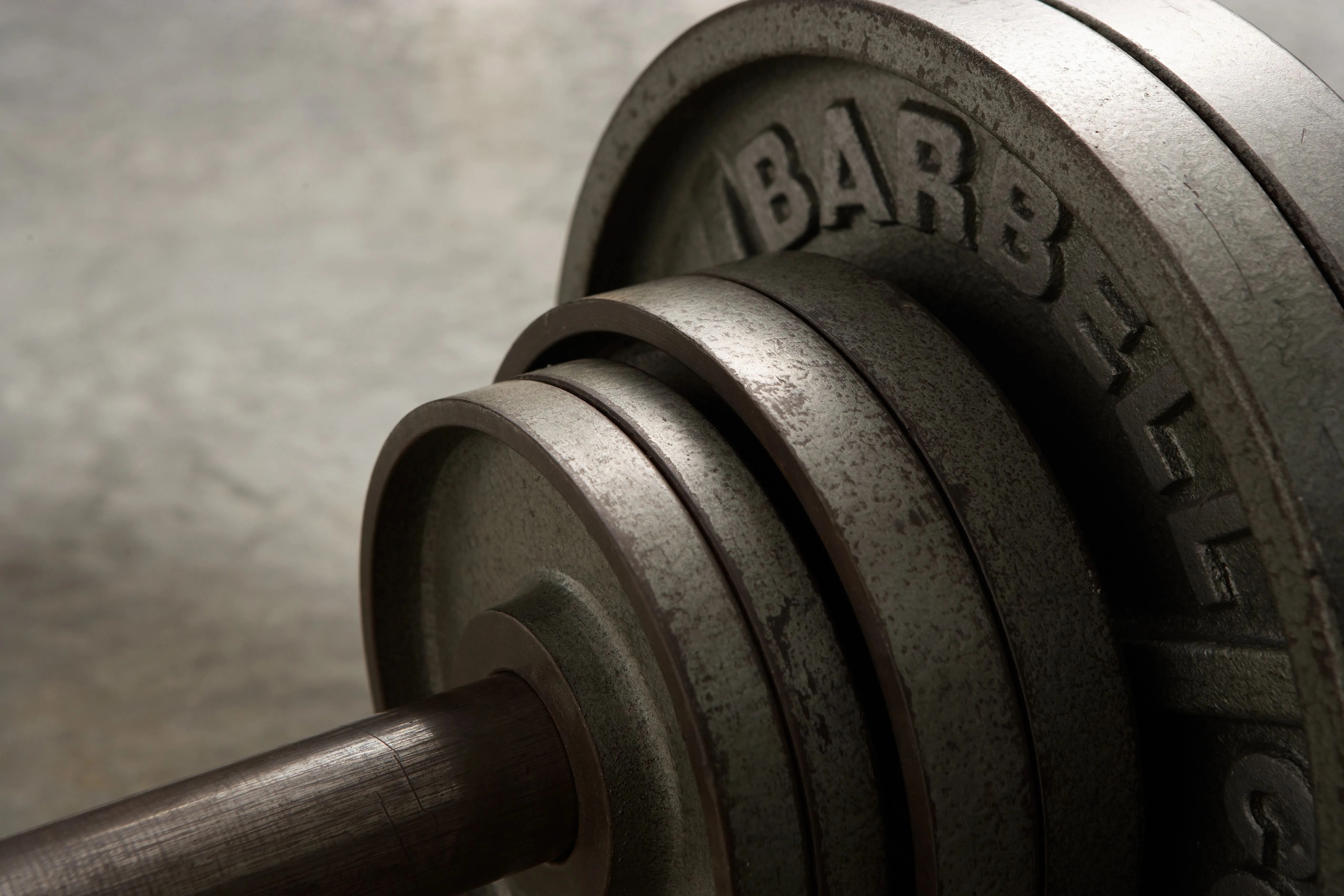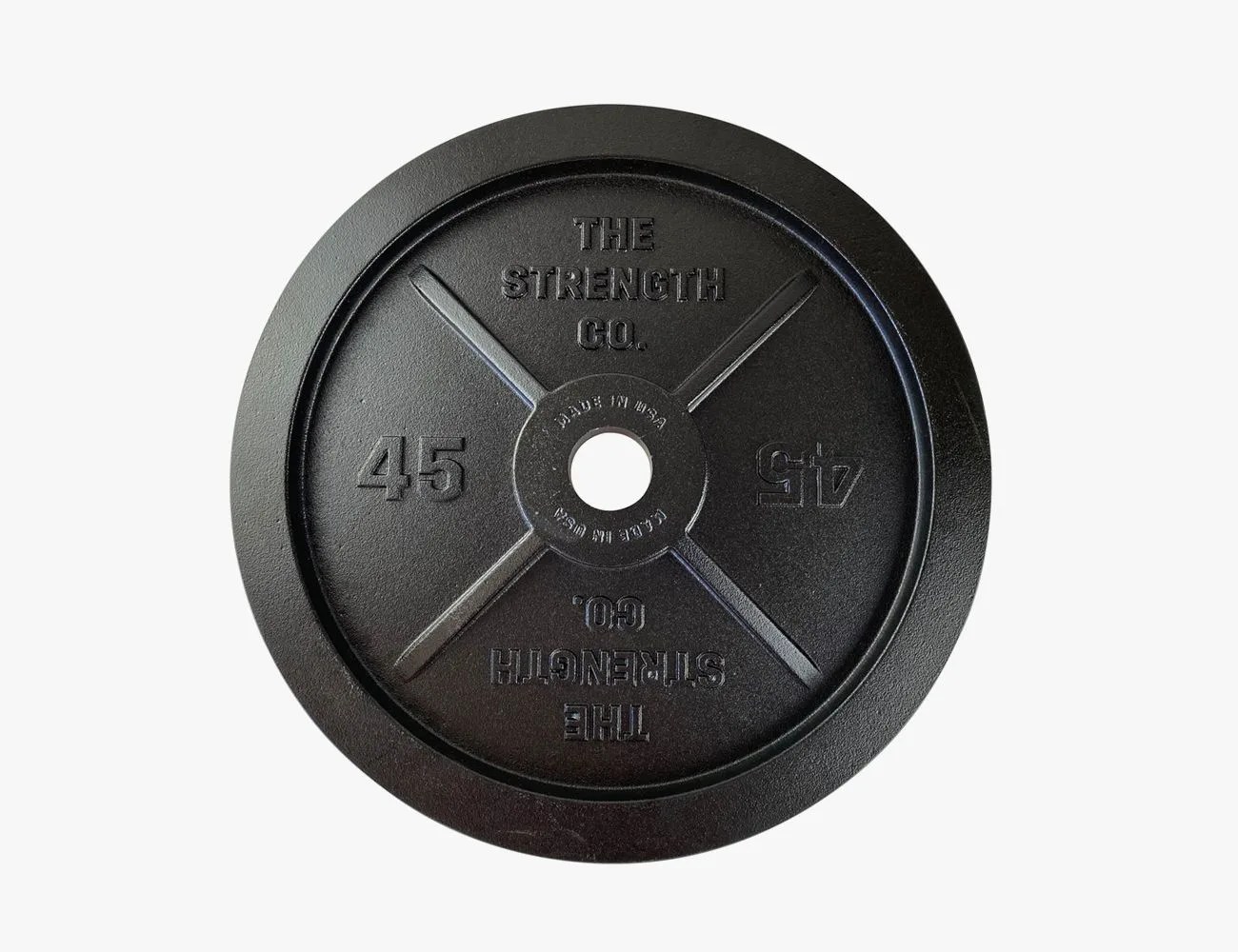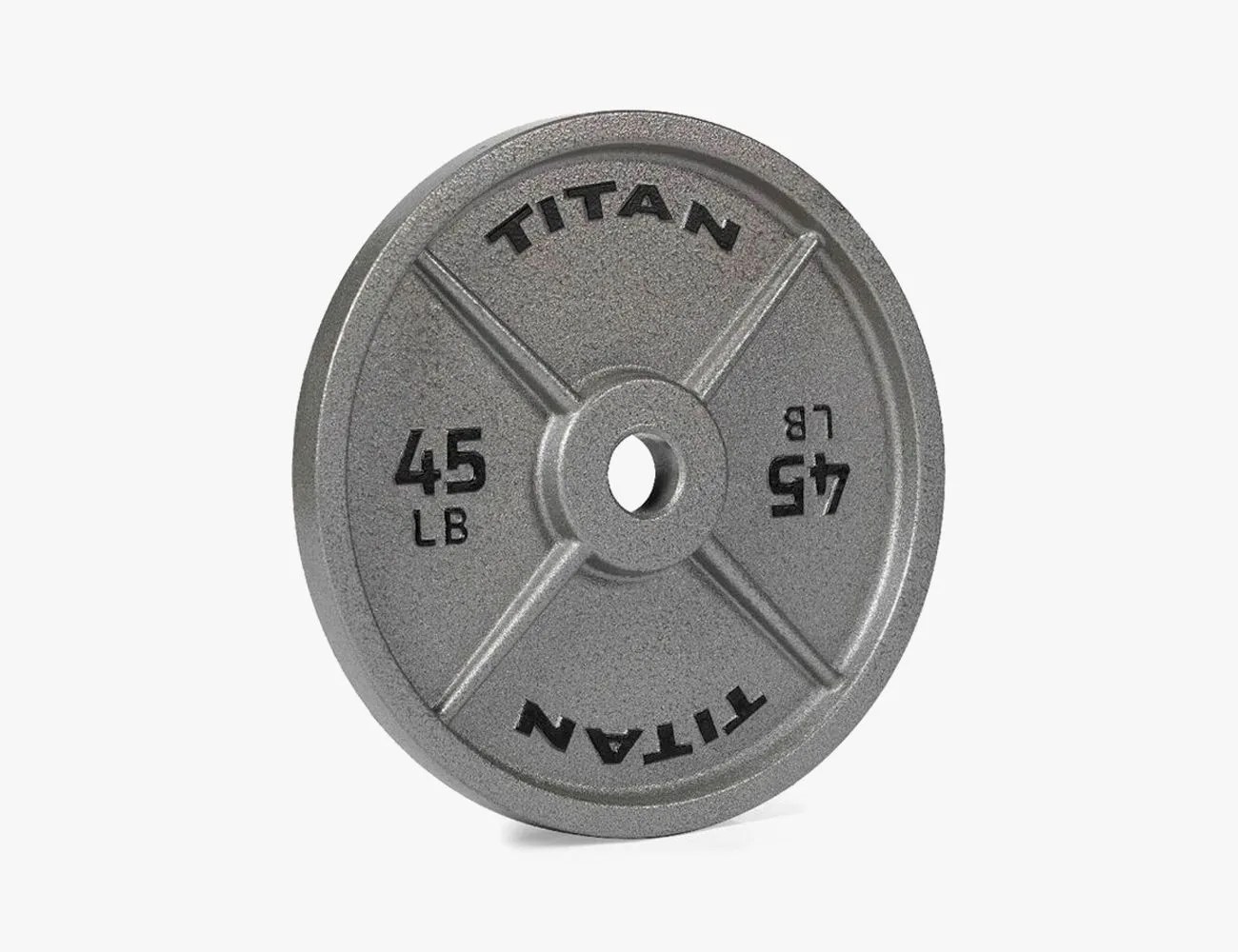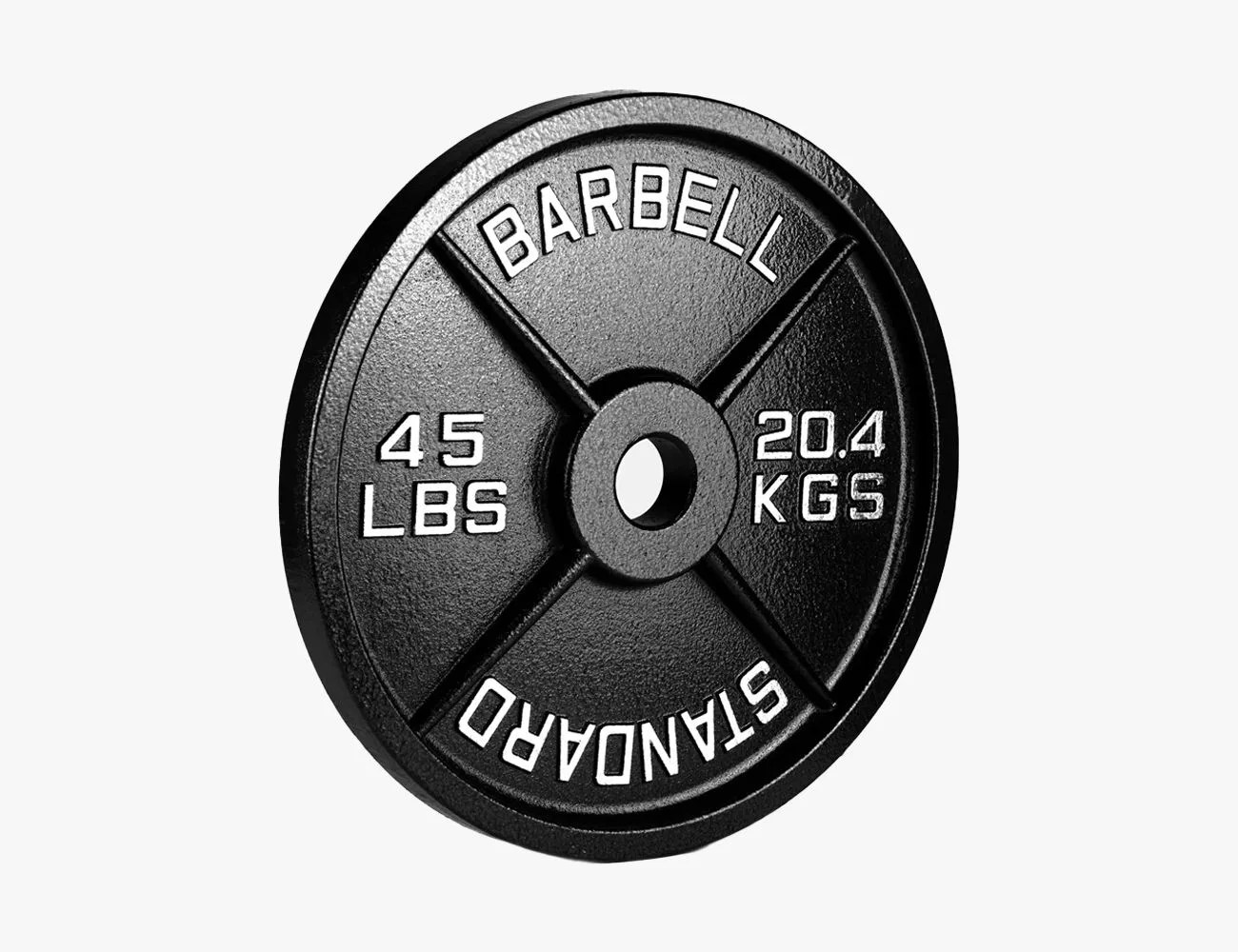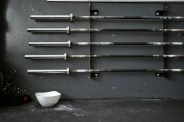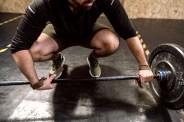Weight plates are a utilitarian staple across many strength training gyms, and using them in your workouts seems simple enough, right? More plates on a loaded barbell means a heavier lift. But if you’ve ever lifted with cast iron plates, you’ll know it takes one mistake (and a few jeers from on-lookers) to realize the process is a little more involved than you thought..
The Correct Way to Load a Barbell with Cast Iron Plates
This question surrounding the proper way to load weight plates only involves cast iron plate designs with a raised lip. If you’re lifting with bumper plates that feature a uniform design on both sides, you can skip this lesson, entirely — although we recommend knowing what to do if you ever find yourself lifting with cast iron plates in the future.
When you’re loading up a barbell with cast iron plates you want to have the lettering facing inward toward the center. This means that when looking at a plate setup from the outside, you shouldn’t be able to read any of the stamped lettering. While it might seem confusing for beginner athletes, over time, you’ll eventually learn to determine your weight total based on each plate’s size, rather than what it’s labeled as.
Some old-school lifters like to tie this barbell practice to an old wive’s tale — facing the letters in keeps all the “power” of your lift inside the bar. But there are some factual reasons why this is a desired practice in strength training.
